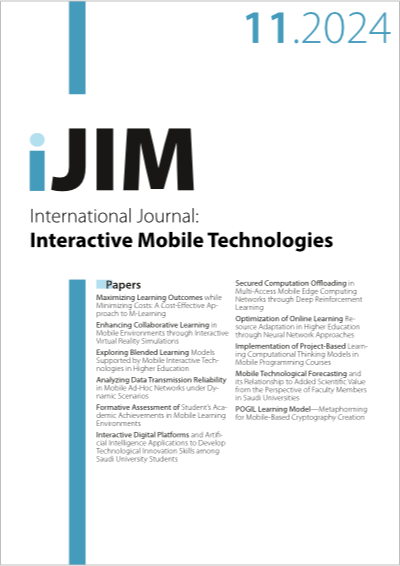POGIL Learning Model—Metaphorming for Mobile-Based Cryptography Creation
DOI:
https://doi.org/10.3991/ijim.v18i11.49057Keywords:
Pogil, Learning Model, Metaphorming, CryptographyAbstract
The cryptography course has a mathematical basis and involves programming algorithms in the creation process while the implementation utilizes a programming language. Cryptography has been widely implemented in everyday life. However, the interest and learning outcomes of students in cryptography courses have not met expectations. Processoriented guided inquiry learning (POGIL) models integrated with metaphor. The POGIL metaphorming model is a student-centered learning model directed at active and creative thinking processes. One of the important processes in this stage is to develop a preliminary form of the product, conduct preliminary field testing, make the main product revision, conduct the main field testing, and perform operational product revisions. Based on the findings from the initial stage, an integrated learning model was developed for the cryptography course. Data for the model validation stage included model books, textbooks, lecturer’s guides, and student guides, calculated using content and construct validation techniques. Analysis of validity test data involves calculating the average score of all validator answers using Aiken’s coefficient v. The study results indicated that the model learning POGIL metaphorming is validly designed to enhance student learning processes and outcomes in cryptography courses.
Downloads
Published
How to Cite
Issue
Section
License
Copyright (c) 2024 Auliana Nasution, Ambiyar, Refdinal, Muhammad Arpan, Elia Putri

This work is licensed under a Creative Commons Attribution 4.0 International License.



